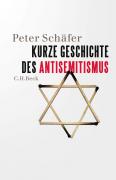Kurze Geschichte des Antisemitismus

Anti-Semitism is again topical and present in our democratic societies, partly manifestly, partly hidden behind critical statements towards the State of Israel. Suffice it to say that in the first days of October 2021, Europe, for the first time in history, launched a "plan against anti-Semitism" to defend Jewish life in Europe against a growing phenomenon, especially on social platforms and in the most hateful ways of inciting discrimination. But when and where did anti-Semitism begin and how new are the dynamics that characterize it today? Hatred of Jews, ghettos and pogroms already existed in pre-Christian antiquity, but it was the New Testament writings, with their opposition to Judaism, that laid the foundations for the birth of legends about ritual killings and poisoning of wells as well as persecutions in the Middle Ages Christian. Luther urged the extermination of the "children of the devil"; the Enlightenment considered Judaism irrational; scientists gave a racial explanation for hatred of the Jewish people, and far too many people participated in the "final solution of the Jewish question" or simply preferred to turn away. One might think that the trauma of the Shoah was in some ways "useful", that it taught us something; yet, anti-Zionism and right-wing ideologies have continued to spread in our contemporary society for years, bringing with them a strong anti-Semitic baggage and preparing the ground for new violence. Peter Schäfer's analysis moves along centuries of history, in eight dense and documented chapters of rare expository clarity: a reading necessary to understand why anti-Semitism is such an ancient and, at the same time, so current phenomenon that it resists every attempt to push it back into the past, and what it means today for the Jews of our neighborhood, of Israel and of the whole world.